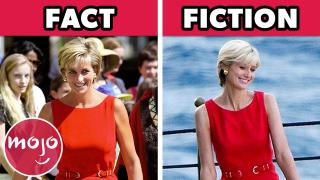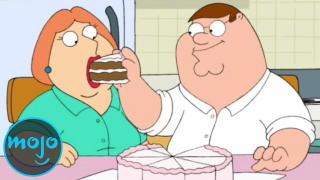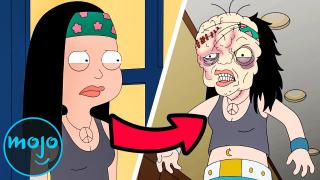Top 10 Things The Buccaneers Gets Factually Right & Wrong

#10: Victorian Holiday Celebrations
Right
“The Buccaneers” follows its characters through the seasons, and for the most part, the seasonal celebrations are accurately depicted for the time and place. A Victorian Christmas may well have included charades, which was a popular parlor game of the era. The Scottish New Year tradition of “First-footing” was also practiced in England during this period. To bring luck, the ‘first foot’ through the door should be a good-looking man, while blondes were believed to be less lucky. “Guy Fawkes Night” - which commemorates the failed gunpowder plot of 1605 - is also depicted in the show. Burning a ‘Guy’ and eating treacle toffee are both traditions associated with this UK holiday. However, during Victorian times, it was primarily a working-class celebration.
#9: Attitudes to Race
Wrong
Thankfully, period dramas have become much more inclusive in recent years. “The Buccaneers” includes both gay and non-white characters amongst its leads. However, despite a diverse cast, the show barely scratches the surface on the subject of race. Of the characters of color in “The Buccaneers” only Conchita’s heritage is referenced. We never see her parents and the discrimination she faces presents more like modern-day racism than its less subtle, historical counterpart. “Bridgerton” wove the characters’ ethnicities into the storylines to create an alternative version of history. Meanwhile “The Gilded Age” and “Sanditon” took a more traditional approach. “The Buccaneers” does its own thing, but it could probably have delved a little deeper.
#8: The Costumes
Wrong
Top 10 Things Bridgerton Got Factually Right & Wrong
Another way in which “The Buccaneers” puts a modern spin on this classic story, is through the costumes. Costume designers Giovanni Lipari, Sheena Napier and Kate Carin took inspiration from the late Victorian era but didn’t stick too closely to the rules. Instead, they got creative. Lipari’s first step was to convince the writers to move the story forward ten years to 1880, when the silhouettes and hairstyles were less fussy. He kept the corsets and trademark bustles, while experimenting with color and fabrics. Carin eschewed pastel tones for bright jewel colors to reflect the bright personalities of the girls. “I don’t care what the history books say” she told British Vogue - “for me, let’s exaggerate.”
#7: The Hairstyles
Wrong
Top 10 Things The Crown Season 6 Part 1 Got Factually Right & Wrong
The “Buccaneers” costume designers may have bent the rules, but when it came to the hairstyles they threw away the rulebook. Victorian women were expected to wear their hair up after they were ‘out’ in society and especially once they were married. They would rarely be seen in public without a hat. Hair was grown long, usually curled and piled up on top of the head in elaborate styles. Short, loose hair - as favored by Nan St. George in the show - didn’t become the rage until the 1920s. In “The Buccaneers” the American girls are styled as a contrast to the more reserved British characters. However, American women, as well as the British, were bound by these rules of fashion and propriety.
#6: Attitudes to Illegitimacy
Right
While this adaptation of Edith Wharton’s work has a fun and contemporary flavor, it’s still very much set in the past. Mabel and Honoria must navigate their romantic relationship in a society where homosexuality is still taboo. Conchita, Jinny and Mrs. St George all suffer due to the unequal nature of Victorian marriage. Meanwhile, Nan is cursed with the stigma of illegitimacy. In the 19th century, children born out of wedlock were not considered respectable members of society. Their parentage was often kept secret and they couldn’t inherit property under the law. The revelation of Nan’s illegitimacy would have been a big deal in this era. The reactions of the other characters feel consistent with the time period.
#5: Divorce & Separation
Right
Top 10 Reasons Why Lois Griffin Should Divorce Peter
When Theo decides to stand by Nan, her mother finds the courage to ask her husband for a divorce. But was this a realistic expectation for the time? Under the doctrine of ‘coverture’, married women were under the authority of their husbands; they couldn’t own property, earn money in their own names, or bring lawsuits. This changed as individual states in the US began to enact Married Women's Property Acts, beginning in 1839. It nonetheless remained challenging for a woman to get divorced, especially in conservative New York State, where adultery was the sole grounds. However, it was possible. “The Buccaneers” author Edith Wharton was herself divorced in 1913.
#4: Social Etiquette & Behaviors
Wrong
There is a difference, of course, between what was legally possible within the confines of Victorian society, and what was socially acceptable. Divorce would have been frowned upon, but so would many other things. For example, the modern day manners of “The Buccaneers’” protagonists would have been considered pretty scandalous. The TV series is a contemporary take on a classic story and the central group of girls are written to be relatable to a young, modern-day audience. They drink at parties, dispense with bonnets and act like 21st Century teenagers, rather than the Victorian idea of ‘young ladies’. The premise of the show pits the Americans against the prim and proper English characters, but realistically, the differences would have been a lot more subtle.
#3: Power Imbalance in Marriage
Right
Top 10 Worst Things Lord Zedd Has Done on Power Rangers
The pressure to act and present yourself a certain way would have come from society as a whole, but “The Buccaneers” demonstrates it most effectively through individual characters. Theo’s mother is the voice of the aristocracy, determined to preserve the dignity of the duke at all costs. But the real villain of the piece is Jinny’s husband, James. Through him, the show demonstrates the potential dangers of marriage during this era. As shown in the series, the imbalance of power between a husband and wife left women open to abuse. Once she’s married, Jinny cannot call her life her own. She is at the mercy of her husband, whom she’s expected to “love, honor and obey.”
#2: American Heiresses in England
Right
Top 10 Worst Things to Happen to Hayley On American Dad
Fast courtships, conducted in the presence of chaperones, didn’t much help the state of Victorian marriages. Many married couples were practically strangers at the beginning of their life together. This was often the case for the so-called “dollar princesses.” This late-Victorian phenomenon involved eligible American heiresses of the Gilded Age. They traveled to England in search of a title, and were courted by cash-poor aristocrats, looking to restore their fortunes. Edith Wharton’s novel focuses on a group of these young women, as does Apple TV’s new adaptation. Whatever liberties the show takes with the historical details, its central premise is based on a real and fascinating period in British history.
#1: Accuracy to the Book
Wrong
Ranking All the Seasons of The Crown Based on Their Historical Accuracy
So, “The Buccaneers” has its moments of historical accuracy, but how true is it to its source material? Well, not very. Show creator Katherine Jakeways described the book as “a starting point.” She’s expanded the characters and changed up the plot. In the novel, Nan isn’t illegitimate; Mabel and Honoria’s relationship isn’t romantic; and Miss Testvalley isn’t so sinister. It’s clear from the start that Guy’s interest in Nan is genuine, not motivated by money. Theo’s name is Ushant, and he isn’t as sympathetic. The book was unfinished at the time of Edith Wharton’s death; author Marion Mainwaring created a finished version in 1993. The show ends very differently - but there’s definitely room for a season two. Perhaps we’ll get that happy ending after all.
Have you been enjoying “The Buccaneers” and have you read the book? Let us know in the comments!







